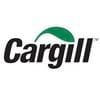Multiple dietary supplementations of omega 3 fatty acids and calcidiol on growth performance, health status, and tissue enrichments of broiler chickens
The average US diet does not contain adequate long chain polyunsaturated fatty acids (PUFA), in particular omega 3 fatty acids DHA and EPA, and 25-hydroxy vitamin D3 (calcidiol). Chicken meat is one of the most consumed animal-sourced proteins and an excellent candidate for enriching these nutrients. The present study was to determine effects of feeding microalgal DHA oil (Onavita, ADM, Decatur, IL), EPA-rich Nannochloropsis sp CO18 (MAGIC, Duke University, Beaufort, NC) and calcidiol (DSM, Parsippany, NJ) on growth performance, health status, and tissue enrichment of these nutrients in broiler chickens. Day-old Cornish male broiler chicks (total = 180) were divided in to 5 treatment groups (6 cages/treatment, 6 birds/cage). Birds were fed: Diet 1 = a corn-soybean meal basal diet (BD, control); Diet 2 = BD + DHA (1.5 g/kg for 0-3 wk and 3.0 g/kg for 4-6 wk); Diet 3 = Diet 2 + Nannochloropsis sp CO18 (0.3 g/kg for 0-3 wk and 0.6 g/kg for 4-6 wk); Diet 4 = Diet 2 + calcidiol (6,000 IU/kg for 0-3 wk and 12,000 IU/kg for 4-6 wk); and Diet 5 = Diet 3 + calcidiol ( 6,000 IU/kg for 0-3 wk and 12,000 IU/kg for 4-6 wk). Growth performance was recorded weekly. Blood, liver, breast, thigh, and adipose tissue were collected at wk 3 and 6 (2 chicks/cage) for biochemical analyses. Data were analyzed by one-way ANOVA. Birds fed Diet 3 had higher (P < 0.05) body weight gain and birds fed Diet 2 had higher (P < 0.05) gain:feed ratio (3.1-16%) at wk 6 than the other groups. Birds fed Diets 2-5 had higher (P < 0.05) DHA and n-3 PUFA concentrations (4-18-fold) and n3/n6 ratios (4-28-fold) in the liver, breast, and thigh than those in the control group at wk 6. Birds fed Diet 3 also had lower (P <0.05, 8%-54%) concentrations of triglycerides, cholesterol, and non-esterified fatty acids in the plasma, liver, breast, and thigh than the control. Birds fed Diet 2 had lower (P <0.05) concentrations of plasma (22%) and tissue phospholipids (31%-47%) than the control. The mRNA abundance of vitamin D metabolism genes (CYP2R1, CYP24A1, VDR) and lipid metabolism genes (FASN, SREBP1, CPT1) was upregulated in the liver by Diets 2-5 compared with the control at wk 3, whereas these genes were downregulated in breast, thigh and adipose tissue by Diets 2-5 compared with the control. Expression of VDR, SREBP1 and CPT1 in the liver, thigh, and adipose tissue was upregulated by Diets 2-5 compared with the control diet at wk 6. In conclusion, feeding chicks with supplemental omega 3 fatty acids and calcidiol improved growth performance, health status, and tissue accumulation of DHA of broiler chickens (Supported by DOE MAGIC grant DEEE0007091, USDA grant 2019-69012-29905, and Cornell University Hatch grants NYC-127302).
Key Words: Broiler chicks, Calcidiol, DHA, Growth performance, Omega 3 fatty acids.
Presented at 2021 PSA Annual Meeting.














